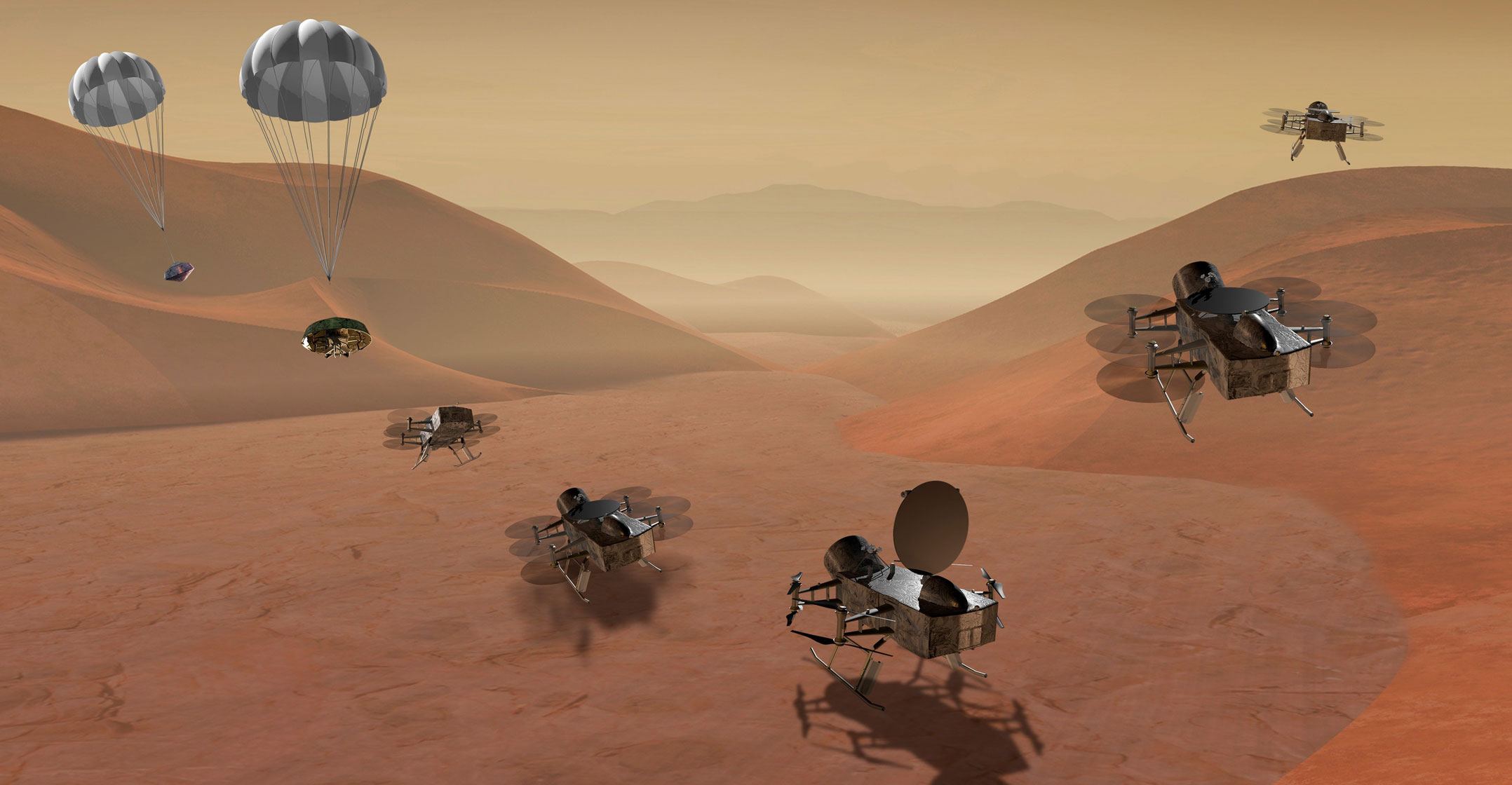
Nasa will send a spacecraft to explore the surface of Saturn’s largest moon, Titan, and search for “the building blocks of life”, the space agency has revealed.
The Dragonfly mission, part of Nasa’s New Frontiers programme, will launch in 2026 and arrive at Titan in 2034. It marks the first time Nasa will fly a multi-rotor driven vehicle for science on another planet.
Announcing the mission, Jim Bridenstine, Nasa administrator, said the space agency was “pushing the boundaries of human knowledge and expanding the limits of technology”.
He added: “Dragonfly will be the first drone lander with the capability to fly over 100 miles through Titan’s thick atmosphere. Titan is unlike any other place in our solar system and the most comparable to early Earth. The instruments on board will help us investigate organic chemistry, evaluate habitability and search for chemical signatures of past or even present life. This revolutionary mission would have been unthinkable just a few short years ago.”
According to Nasa, Titan is a “unique, richly organic world”, which could provide clues as to how life arose on Earth. Larger than the planet Mercury, it is the second largest moon in the solar system, and is about 1.4 billion kilometres from the Sun.
Its surface temperature is around -179°C, with a surface pressure 50% higher than Earth’s.
Range of environments
Dragonfly, which has eight rotors and flies like a large drone, will explore a range of environments on Titan.
The moon has a nitrogen-based atmosphere like Earth, but unlike our planet also has clouds and rain of methane.
According to Nasa, Titan’s weather and surface processes have complex organics, energy and water similar to those that may have kick-started life on Earth. Dragonfly’s instruments will search for chemical evidence of past or existing life on the moon.
Thomas Zurbuchen, Nasa’s associate administrator for science, said: “Titan is unlike any other place in the solar system, and Dragonfly is like no other mission. It’s remarkable to think of this rotorcraft flying miles and miles across the organic sand dunes of Saturn’s largest moon, exploring the processes that shape this extraordinary environment.
“Dragonfly will visit a world filled with a wide variety of organic compounds, which are the building blocks of life and could teach us about the origin of life itself.”
Dune fields
Nasa said Dragonfly will first land on Titan’s “Shangri-La” dune fields, similar to those in Namibia, making short flights around the region and collecting samples, before progressing to the Selk impact crater.
The lander will eventually fly more than 175km, nearly double the distance travelled to date by all the Mars rovers combined.
Dragonfly is the latest in a series of missions under the New Frontiers programme, following on from the New Horizons mission to Pluto and the Kuiper Belt, the Juno mission to Jupiter and the Osiris-REx mission to the asteroid Bennu.




